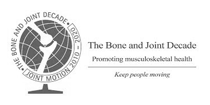Revision Knee Replacement
Revision knee replacement surgery involves replacing part or all of your previous knee prosthesis with a new prosthesis. Although total knee replacement surgery is successful, sometimes the procedure can fail due to various reasons and require a second revision surgery.
Disease Overview
The knee joints are lined by soft articular cartilage that cushion the joints and aid in smooth movement of the joint bones. Degeneration of the cartilage due to wear and tear leads to arthritis, which is characterized by severe pain.
Total Knee Replacement
During total knee replacement, the damaged cartilage and bone is removed from the knee joint and replaced with artificial components. Artificial knee joints are usually made of metal, ceramic or plastic and consist of the femoral component and the tibial component.
Indications
Revision knee replacement surgery may be advised to patients if they have one or more of the following conditions:
- Trauma to the knee joint
- Chronic progressive joint disease
- Increased pain in the affected knee
- Worn out prosthesis
- Knee instability or a feeling of giving way while walking
- Loosening of the prosthesis
- Infection in the prosthetic joint
- Weakening of bone around the knee replacement, a process known as osteolysis (bone loss)
- Stiffness in the knee
- Leg length discrepancy
- Fracture
Surgical procedure
Revision knee replacement surgery may involve the replacement of one or all of the components.
The surgery is performed under general anesthesia. Your surgeon makes an incision over the knee to expose the knee joint. The kneecap along with its ligament may be moved aside so that there is enough room to perform the operation. Then the old femoral component of the knee prosthesis is removed. The femur is prepared to receive the new component. In some cases the damaged bone is removed and bone graft or a metal wedge may be used to make up for the lost bone.
Next the tibial component along with the old plastic liner is removed. The damaged bone is cut and the tibia is prepared to receive the new component. Similar to the femur, the lost bone is replaced either by a metal wedge or bone graft. Then, a new tibial component is secured to the end of the bone using bone cement. A new plastic liner will be placed on the top of the tibial component. If the patella (kneecap) has been damaged, your surgeon will resurface and attach a plastic component. The tibial and femoral components of the prosthesis are then brought together to form the new knee joint, and the knee muscles and tendons are reattached. Surgical drains are placed for the excess blood to drain out and the incision is closed.
Risks and complications
As with any major surgical procedure, there may be certain risks and complications involved with revision knee replacement surgery. The possible complications after revision knee replacement include:
- Stiffness in the knee
- Infection
- Bleeding
- Formation of blood clots in the leg veins
- Injury to nerves or blood vessels
- Prosthesis failure
- Patella (kneecap) dislocation
- Ligament injuries
Postoperative care
Following revision knee replacement surgery, a Continuous passive motion (CPM) machine may be used to allow the knee joint to slowly move. The machine is attached to the treated leg which slowly moves the joint through a controlled range of motion, while you relax.
You can walk with crutches or a walker. You will be sent for rehabilitation within a couple days of surgery. A physical therapist will teach you specific exercises to strengthen your leg and restore range of motion to the knee. Your physical therapist will also provide you with a home exercise program to strengthen thigh and calf muscles.
Knee immobilizers are used when performing physical therapy, walking and while sleeping in order to keep the knee stabilized.
Other Knee List


 Menu
Menu










